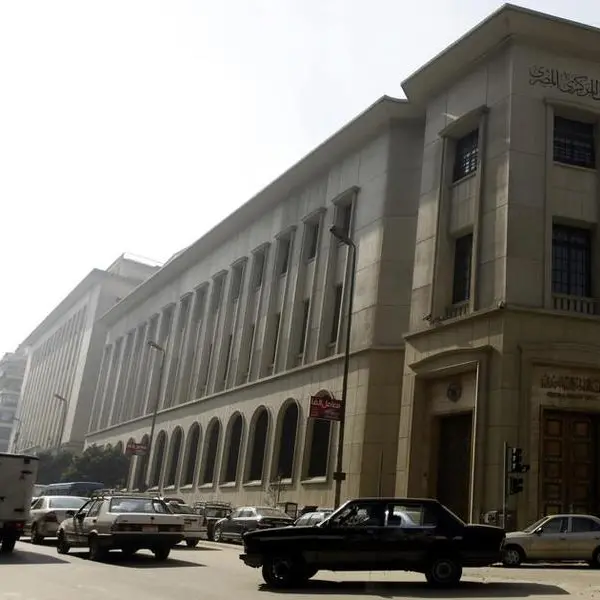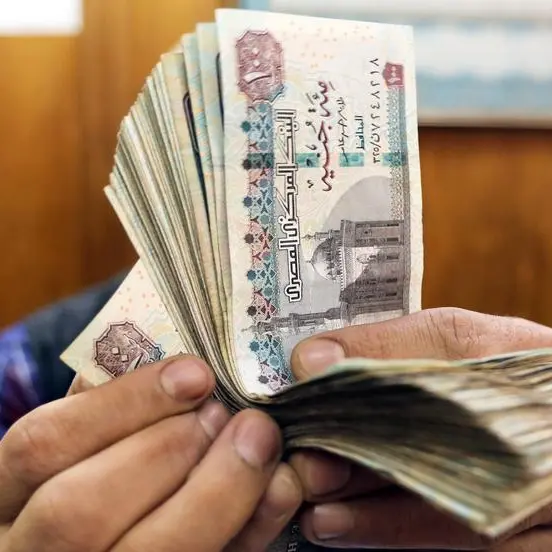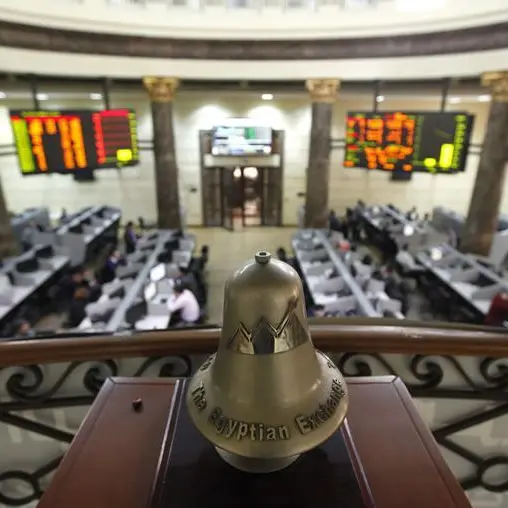KUWAIT - Kuwait ranked 51st out of 80 emerging market sovereigns in terms of vulnerability to tighter funding conditions, according to the “Global Sovereign Outlook 2018: Brighter With Risk of Turbulence,” report published recently on Ratings- Direct by Standard and Poors.
The report explained that the ranking of emerging market sovereigns is determined using six variables as follows:
Basic balance/GDP: current account balance and net foreign direct investment as a percent of GDP
CAB/CAR: Current account balance as a percentage of current account receipts
FXR/CAP: Usable foreign exchange reserves in months of current account payments
Gross: Gross external financing requirements
NNXD: Narrow net external debt
STXD/CAR: Short-term external debt as a percentage of current account receipts
Kuwait ranked 26th in basic balance/ GDP with a ratio of -2.2, 58th in CAB/CAR with a ratio of -4.5, 50th in FXR/CAP with a ratio of 4.3, 43rd in Gross with a ratio of 105.0, 80th in NNXD with a ratio of -599.3 and ratio of 40.0 for STXD/CAR.
On the overall ranking of other GCC countries, Oman ranked ninth, Qatar ranked 20th, Bahrain ranked 28th and Saudi Arabia ranked 77th.
The United Arab Emirates is not part of the list. As 2017 draws to a close, so — probably — does a prolonged period of sovereign ratings weakness. For a decade, sovereign rating downgrades have outnumbered upgrades.
On average there have been two downgrades per month for one upgrade, as was also the case in 2017. The average rating of the currently 131 rated sovereigns has dropped by one notch over the past 10 years. It now stands at ‘BBB-’, just inside investment grade.
However, 2018 looks more promising. Our outlooks on long-term ratings are a useful pointer of the likely direction sovereign ratings will take in the coming year or two. Through 2017, the balance of positive and negative outlooks has improved dramatically.
For the first time since March 2008, the balance of outlooks is positive, even if only minimally so. This suggests that the slow but inexorable slide in sovereign ratings over the past decade may come to a halt in 2018. Potentially, we may even see a very mild recovery of the average rating.
In this sense, 2018 could be a watershed year, according to S&P. Why did it take so long for ratings to stabilize? The global recovery from the great financial crisis began as early as 2010, although at an uneven pace across countries.
In fact, the International Monetary Fund (IMF) estimates that the output gap for advanced economies (accounting for 60 percent of world GDP) will be closed in 2018, following a decade of spare capacity. Other large economies, including China and India, have also been growing at a rapid pace. The world economy is at a sweet spot.
Yet, sovereign ratings have only just touched bottom. The reason is that important challenges remain. The economic recovery has occurred in an environment of unprecedented monetary stimulus. Policy interest rates of the world’s leading central banks continue to be close to zero. The balance sheet of the G4 central banks alone has quadrupled from pre-crisis levels to reach almost $16 trillion, approaching 20 percent of world GDP. This is a dependable signal that the world’s foremost monetary policymakers consider that their economies’ recoveries remain fragile and at risk of important setbacks. We agree, says S&P. The unprecedented monetary accommodation has led to a liquidityfueled economic healing process in the world economy that probably overstates its underlying sustainable recovery. As central banks have taken a cautious view of the economic revival, so have we: the sovereign downgrade cycle has ground to a halt, but not yet reversed. As the recovery of advanced economies gains breadth and depth, including in the eurozone, the positive output gap will gradually increase. This may in turn lead to rising inflation pressures and trigger faster monetary normalization by the leading central banks than currently envisaged by the market. We believe that one risk of such a faster tightening process will be the potential disruption of cross-border capital flows. As global interest rates have plummeted and in some bond market segments turned negative, investors have pushed out the investable universe ever further into emerging and frontier markets. Here, they can still find higher-yielding securities, although at the cost of taking bigger credit risks.
The Institute of International Finance (IIF) estimates that nonresident net portfolio inflows to emerging markets will reach a record $340 billion this year, followed by $435 billion in 2018. In comparison, the average for 2013-2016 was $200 billion. Excluding flows into China, the average net inflows into emerging markets will still be 63% higher in 2017 ($250 billion) and 2018 ($245 billion) than the average of 2013-2016 ($151 billion (IIF: October 2017 Capital Flows to Emerging Markets). Added to these portfolio inflows are sizable nonresident net foreign direct investment (FDI) inflows of close to $500 billion.
Portfolio inflows have grown particularly fast in recent years. And it is these portfolio flows that can be more volatile, potentially reversing direction very rapidly when confidence wanes or alternative investment opportunities open up.
The unprecedented portfolio flows into emerging markets help those countries finance investments that can contribute to securing their future development and prosperity. But they also create a development model that is dependent on external financing conditions. This renders them vulnerable to sudden stops of capital inflows and possible reversals. This risk may come to the fore in the coming years if and when accelerated monetary tightening gets under way.
Investors are likely to withdraw some invested funds from emerging markets to put back into advanced economies’ securities, which will provide higher real returns than they do currently. Even relatively small shifts back to advanced economies’ securities relative to their outstanding volume can have a meaningful impact on emerging markets. This is because the capital market is simply so much larger in the advanced economies.
For example, the volume of outstanding G7 government bonds is almost 10x the size of the debt of all noninvestment-grade sovereigns combined globally. Not all emerging markets will be equally impacted. Other things being equal, one can expect sovereigns more at risk of a capital flow reversal would be those that display a higher dependency on foreign savings (and thus capital inflows) to finance their economic models.
There is no single variable to measure this vulnerability and to rank sovereigns accordingly. Instead, we chose a series of financial ratios that have some explanatory value in determining external liquidity vulnerability. We rank 80 rated emerging markets according to those variables. In a second step, we aggregate those rankings into a single (unweighted) overall ranking.
The report explained that the ranking of emerging market sovereigns is determined using six variables as follows:
Basic balance/GDP: current account balance and net foreign direct investment as a percent of GDP
FXR/CAP: Usable foreign exchange reserves in months of current account payments
Gross: Gross external financing requirements
NNXD: Narrow net external debt
STXD/CAR: Short-term external debt as a percentage of current account receipts
Kuwait ranked 26th in basic balance/ GDP with a ratio of -2.2, 58th in CAB/CAR with a ratio of -4.5, 50th in FXR/CAP with a ratio of 4.3, 43rd in Gross with a ratio of 105.0, 80th in NNXD with a ratio of -599.3 and ratio of 40.0 for STXD/CAR.
On the overall ranking of other GCC countries, Oman ranked ninth, Qatar ranked 20th, Bahrain ranked 28th and Saudi Arabia ranked 77th.
The United Arab Emirates is not part of the list. As 2017 draws to a close, so — probably — does a prolonged period of sovereign ratings weakness. For a decade, sovereign rating downgrades have outnumbered upgrades.
On average there have been two downgrades per month for one upgrade, as was also the case in 2017. The average rating of the currently 131 rated sovereigns has dropped by one notch over the past 10 years. It now stands at ‘BBB-’, just inside investment grade.
However, 2018 looks more promising. Our outlooks on long-term ratings are a useful pointer of the likely direction sovereign ratings will take in the coming year or two. Through 2017, the balance of positive and negative outlooks has improved dramatically.
For the first time since March 2008, the balance of outlooks is positive, even if only minimally so. This suggests that the slow but inexorable slide in sovereign ratings over the past decade may come to a halt in 2018. Potentially, we may even see a very mild recovery of the average rating.
In this sense, 2018 could be a watershed year, according to S&P. Why did it take so long for ratings to stabilize? The global recovery from the great financial crisis began as early as 2010, although at an uneven pace across countries.
In fact, the International Monetary Fund (IMF) estimates that the output gap for advanced economies (accounting for 60 percent of world GDP) will be closed in 2018, following a decade of spare capacity. Other large economies, including China and India, have also been growing at a rapid pace. The world economy is at a sweet spot.
Yet, sovereign ratings have only just touched bottom. The reason is that important challenges remain. The economic recovery has occurred in an environment of unprecedented monetary stimulus. Policy interest rates of the world’s leading central banks continue to be close to zero. The balance sheet of the G4 central banks alone has quadrupled from pre-crisis levels to reach almost $16 trillion, approaching 20 percent of world GDP. This is a dependable signal that the world’s foremost monetary policymakers consider that their economies’ recoveries remain fragile and at risk of important setbacks. We agree, says S&P. The unprecedented monetary accommodation has led to a liquidityfueled economic healing process in the world economy that probably overstates its underlying sustainable recovery. As central banks have taken a cautious view of the economic revival, so have we: the sovereign downgrade cycle has ground to a halt, but not yet reversed. As the recovery of advanced economies gains breadth and depth, including in the eurozone, the positive output gap will gradually increase. This may in turn lead to rising inflation pressures and trigger faster monetary normalization by the leading central banks than currently envisaged by the market. We believe that one risk of such a faster tightening process will be the potential disruption of cross-border capital flows. As global interest rates have plummeted and in some bond market segments turned negative, investors have pushed out the investable universe ever further into emerging and frontier markets. Here, they can still find higher-yielding securities, although at the cost of taking bigger credit risks.
The Institute of International Finance (IIF) estimates that nonresident net portfolio inflows to emerging markets will reach a record $340 billion this year, followed by $435 billion in 2018. In comparison, the average for 2013-2016 was $200 billion. Excluding flows into China, the average net inflows into emerging markets will still be 63% higher in 2017 ($250 billion) and 2018 ($245 billion) than the average of 2013-2016 ($151 billion (IIF: October 2017 Capital Flows to Emerging Markets). Added to these portfolio inflows are sizable nonresident net foreign direct investment (FDI) inflows of close to $500 billion.
Portfolio inflows have grown particularly fast in recent years. And it is these portfolio flows that can be more volatile, potentially reversing direction very rapidly when confidence wanes or alternative investment opportunities open up.
The unprecedented portfolio flows into emerging markets help those countries finance investments that can contribute to securing their future development and prosperity. But they also create a development model that is dependent on external financing conditions. This renders them vulnerable to sudden stops of capital inflows and possible reversals. This risk may come to the fore in the coming years if and when accelerated monetary tightening gets under way.
Investors are likely to withdraw some invested funds from emerging markets to put back into advanced economies’ securities, which will provide higher real returns than they do currently. Even relatively small shifts back to advanced economies’ securities relative to their outstanding volume can have a meaningful impact on emerging markets. This is because the capital market is simply so much larger in the advanced economies.
For example, the volume of outstanding G7 government bonds is almost 10x the size of the debt of all noninvestment-grade sovereigns combined globally. Not all emerging markets will be equally impacted. Other things being equal, one can expect sovereigns more at risk of a capital flow reversal would be those that display a higher dependency on foreign savings (and thus capital inflows) to finance their economic models.
There is no single variable to measure this vulnerability and to rank sovereigns accordingly. Instead, we chose a series of financial ratios that have some explanatory value in determining external liquidity vulnerability. We rank 80 rated emerging markets according to those variables. In a second step, we aggregate those rankings into a single (unweighted) overall ranking.
© 2017 Arab Times Kuwait English Daily. All Rights Reserved. Provided by SyndiGate Media Inc. (Syndigate.info).











